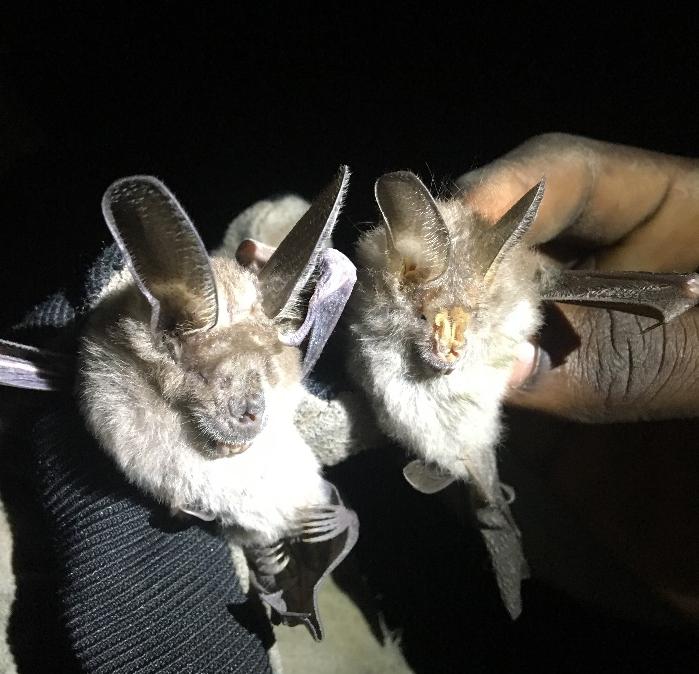Bismark Appiah Opoku
Other projects
Caves are crucial resources for bats as they provide habitat for roosting and breeding as well as protection from predators. Populations of cave-dwelling bats are increasingly threatened due to agricultural intensification, overhunting, guano mining and unjustified persecution. Actually, cave roosts are limited resources and thus destruction and disturbances severely impact the local bat populations. In order to conserve cave-dwelling bats, this project seeks to identify and map important bat caves, survey population sizes, identify threats to cave bats and implement mitigation activities.

Nycteris macrotis and N. hispida.
Bats are among the most ecological beneficial animals worldwide. Their habitats may comprise of forests, urban sites and caves. Cave roost sites are critical resources for numerous bat species worldwide as they are patchily distributed in the landscape. They serve as temporal and permanent roosts, breeding grounds, avenues for social interactions while providing protection from predators and weather extremes. (Mickleburgh and Hutson 2001). However, populations of cave bats are declining worldwide, due to habitat conversion, pesticide use, overhunting and also the disturbance and destruction of cave roosts (Hutson et al. 2000, Yokubol 2000). In addition, people tend to have negative perceptions about bats which may lead to unjustified persecution. Such threats pose serious conservation concerns, especially in Ghana, where caves are used by pilgrims and bats are hunted for food. Further, valuable foraging habitat continues to be converted for agricultural purposes (Appiah et al. 2009; Anti et al. 2015).
Ensuring the continuous existence and survival of cave-dwelling bats, depends largely on the implementation of conservation strategies that provides effective protection for caves. Yet, inadequate information on caves and bats makes it currently impossible to develop and implement conservation strategies for cave-dwelling bats.
Therefore, the project will
1. Produce a checklist of important bat caves, identify species, estimate colony size and identify threats to cave bats.
2. Contribute to raising public awareness and improve the knowledge base of local people on bats through series of conservation education and sensitization measures.
3. Contribute to building the capacities of young scientists to pursue a career in bat research and conservation to expand the network of bat experts in Ghana.
4. Finally promote the legal protection of caves of outstanding importance through dialogue and advocacy.
Data from this project will contribute to the development of pragmatic management strategies that will ensure the proper protection of cave bats.